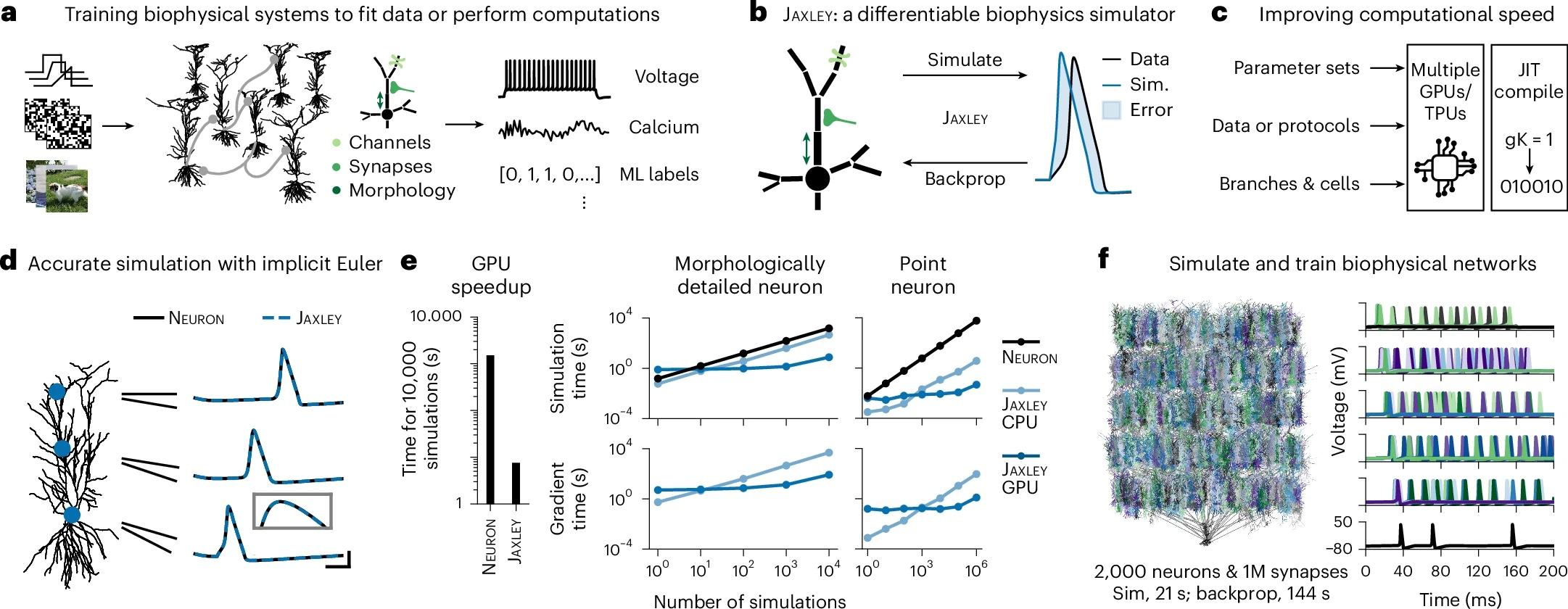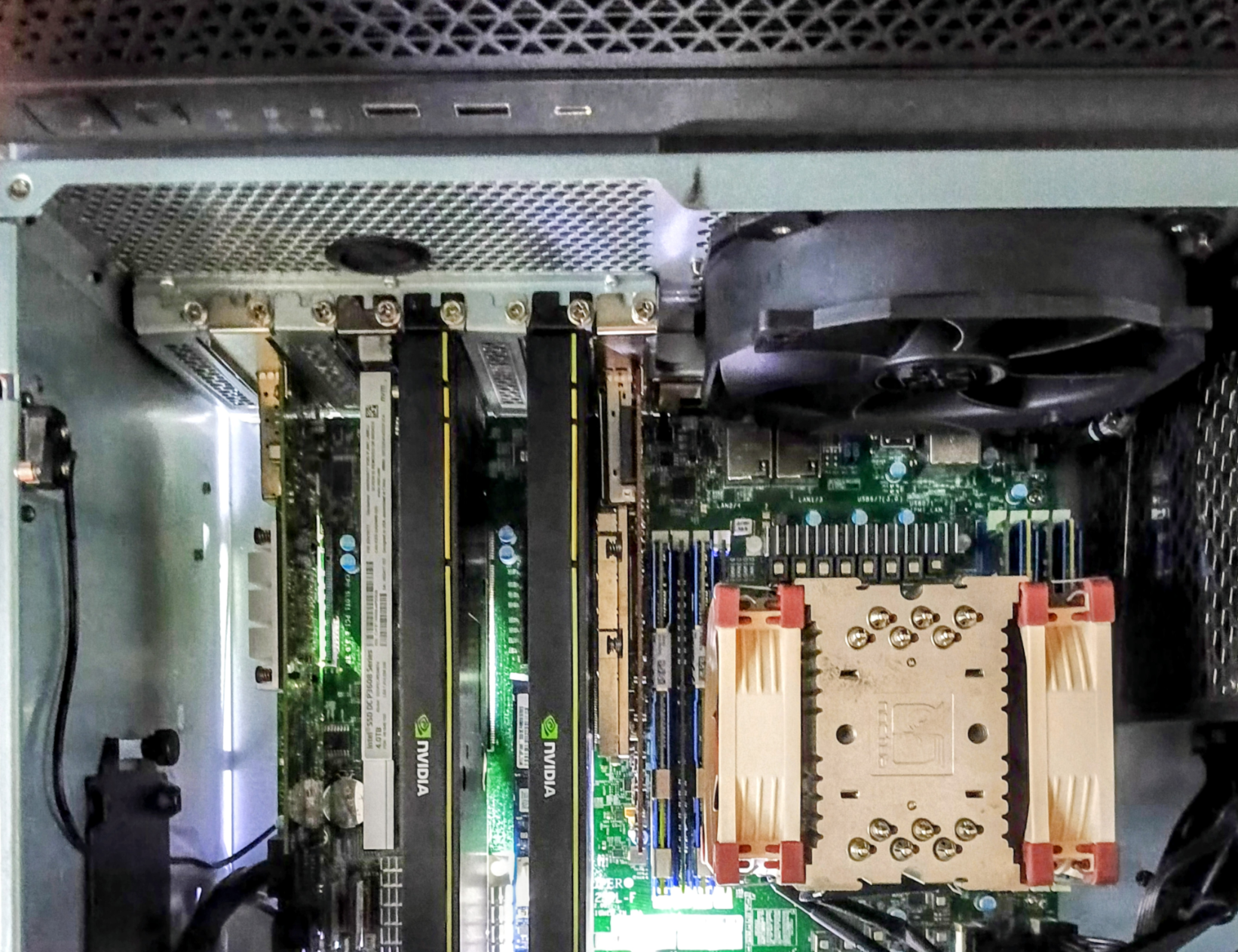Igniting the GPU: From Kernel Plumbing to 3D Rendering on RISC-V
#FreeBSD #ports for New Feature Branch of #nvidia #GPU #driver 590.48.01 is now under review as -devel variant.
https://bugs.freebsd.org/bugzilla/show_bug.cgi?id=292027
https://reviews.freebsd.org/D54414
Note that this version drops support for a bunch of old GPUs before Turing generation of architecture. Anyone who are using -devel variant of ports/pkgs and having dropped GPUs need to switch to master ports now at 580.119.02.
New legacy branch -580 would be created at the time Production Branch of 590 (or later) series appears and lands to ports tree, but not this time.
SSD, mémoire vive : pénurie, mon amour… - https://next.ink/215208/ssd-memoire-vive-penurie-mon-amour/
> Fortes tensions : c’est le terme à la mode quand il s’agit de parler de puces mémoire, aussi bien pour les SSD que la mémoire vive. Les demandes explosent du côté des professionnels sur les GPU avec de grosses quantités de mémoire vive, à cause de l’intelligence artificielle. La situation pourrait s’aggraver avec maintenant une volonté de faire des « AI SSD ».
In another about-turn, Trump has approved Nvidia H200 chip sales to China. It will make the chipmaker billions of dollars, but Democrats say it risks eroding America’s edge in the AI race and strengthening Beijing’s military and cyber capabilities.
In another about-turn, Trump has approved Nvidia H200 chip sales to China. It will make the chipmaker billions of dollars, but Democrats say it risks eroding America’s edge in the AI race and strengthening Beijing’s military and cyber capabilities.
My #introduction needs a refresh.
I'm a #PhD student at the University of #Vermont, studying the #Evolution of #Evolvability. I'm into #AI, #ALife, #Biology, and #Philosophy, because I want to understand #life, #adaptation, and #intelligence using my native language of #ComputerScience. I share my musings and #research on my #blog. I love #science generally, and am full of bitchy #AcademicChatter.
I was a #SoftwareEngineer in #SiliconValley for many years, but left in 2021. I'm glad I did, and now I feel a bit betrayed by the #TechIndustry. I've been going back to my #FOSS roots, and gradually #DeGoogle ing my life. I still love to talk about #code #craft, #UX, and healthy #engineering #culture. Recently I've been enjoying #gpu #programming, mostly in #taichilang.
I have a wife and a #cat. I love #nature, #photography, #cooking, and #yoga.
All kinds of people are valid and worthy, but #trans people, folks on the #autism spectrum, and #bipoc get a shout out right now because they need our support.
My #introduction needs a refresh.
I'm a #PhD student at the University of #Vermont, studying the #Evolution of #Evolvability. I'm into #AI, #ALife, #Biology, and #Philosophy, because I want to understand #life, #adaptation, and #intelligence using my native language of #ComputerScience. I share my musings and #research on my #blog. I love #science generally, and am full of bitchy #AcademicChatter.
I was a #SoftwareEngineer in #SiliconValley for many years, but left in 2021. I'm glad I did, and now I feel a bit betrayed by the #TechIndustry. I've been going back to my #FOSS roots, and gradually #DeGoogle ing my life. I still love to talk about #code #craft, #UX, and healthy #engineering #culture. Recently I've been enjoying #gpu #programming, mostly in #taichilang.
I have a wife and a #cat. I love #nature, #photography, #cooking, and #yoga.
All kinds of people are valid and worthy, but #trans people, folks on the #autism spectrum, and #bipoc get a shout out right now because they need our support.
I am not worried about the alleged #aibubble
That occurs when there is over-investment. Right now the demand outstrips the supply.
#AI is not going away.
There will however be a problem when #bigtech moves over to #NPU instead of #GPU usage.
That will wipe out smaller providers as the cost per token will fall dramatically and that will shift power upwards.
Power companies also want to meet profit projections, so to make up for the shortfall in usage by increasing private #electricity cost.
📏 Text rendering and effects using GPU-computed distances
https://blog.pkh.me/p/47-text-rendering-and-effects-using-gpu-computed-distances.html
#graphics #gpu #programming #software #text #fonts #rendering #softwaredevelopment
📏 Text rendering and effects using GPU-computed distances
https://blog.pkh.me/p/47-text-rendering-and-effects-using-gpu-computed-distances.html
#graphics #gpu #programming #software #text #fonts #rendering #softwaredevelopment
🧠 New paper by Deistler et al: #JAXLEY: differentiable #simulation for large-scale training of detailed #biophysical #models of #NeuralDynamics.
They present a #differentiable #GPU accelerated #simulator that trains #morphologically detailed biophysical #neuron models with #GradientDescent. JAXLEY fits intracellular #voltage and #calcium data, scales to 1000s of compartments, trains biophys. #RNNs on #WorkingMemory tasks & even solves #MNIST.
Jaxley: differentiable simulation enables large-scale training of detailed biophysical models of neural dynamics
🧠 New paper by Deistler et al: #JAXLEY: differentiable #simulation for large-scale training of detailed #biophysical #models of #NeuralDynamics.
They present a #differentiable #GPU accelerated #simulator that trains #morphologically detailed biophysical #neuron models with #GradientDescent. JAXLEY fits intracellular #voltage and #calcium data, scales to 1000s of compartments, trains biophys. #RNNs on #WorkingMemory tasks & even solves #MNIST.
Jaxley: differentiable simulation enables large-scale training of detailed biophysical models of neural dynamics
Simulating a Planet on the GPU: Part 1 (2022)
https://www.patrickcelentano.com/blog/planet-sim-part-1
#HackerNews #Simulating #a #Planet #on #the #GPU #Part #1 #2022 #GPUComputing #PlanetSimulation #GraphicsProgramming
a Rust ray tracer that runs on any GPU – even in the browser
Any of you sharing GPU's without SRIOV?
I have been "abusing" my host OS to run gpu demanding work.
Notably, steam with gamescope so servers aren't single use.
They can server as multi-media centers, but also as couch gaming stations, nas, etc.
Basically trying to push the envelope of HCI (Hyper Converged Infra).
All of this because GPU vendor are greedy and don't want to have SRIOV on consumer grade hardware.
Any of you sharing GPU's without SRIOV?
I have been "abusing" my host OS to run gpu demanding work.
Notably, steam with gamescope so servers aren't single use.
They can server as multi-media centers, but also as couch gaming stations, nas, etc.
Basically trying to push the envelope of HCI (Hyper Converged Infra).
All of this because GPU vendor are greedy and don't want to have SRIOV on consumer grade hardware.
🎁 Dev Box DPU Upgrade 🎁
More ZFS PoC for vGPU + DOCA blah blah NVMe-oF offloads
Left–to–Right (lotta slots)
- Broadcom CNA 2x10G
- Optane P3608 2x 2TB NVMe AIC
- Nvidia T10 16GB GPU (w/ 90mm blower)
- blank
- Nvidia T10 16GB GPU (w/ 90mm blower)
- Nvidia Bluefield2 DPU 16GB RAM, 2x 25G
- Optane 4x 512GB NVDIMM
- Samsung 4x 32GB ECC Volatile
- Intel Xeon 8370C (Azure) 32C/64T 270W
Chassis cooled by 2x 180mm, 1x 140mm, 1x 120mm. Idles very comfortably below 40dB, wind-tunnel at full rpm is more like whoooooshing than the usual 28K-RPM 40mm axial fan screamers people expect from enterprise hardware. Choose wisely.
#gpu #dpu #ai #dev #llm #nvidia #intel #optane #zfs #linux #freebsd
🎁 Dev Box DPU Upgrade 🎁
More ZFS PoC for vGPU + DOCA blah blah NVMe-oF offloads
Left–to–Right (lotta slots)
- Broadcom CNA 2x10G
- Optane P3608 2x 2TB NVMe AIC
- Nvidia T10 16GB GPU (w/ 90mm blower)
- blank
- Nvidia T10 16GB GPU (w/ 90mm blower)
- Nvidia Bluefield2 DPU 16GB RAM, 2x 25G
- Optane 4x 512GB NVDIMM
- Samsung 4x 32GB ECC Volatile
- Intel Xeon 8370C (Azure) 32C/64T 270W
Chassis cooled by 2x 180mm, 1x 140mm, 1x 120mm. Idles very comfortably below 40dB, wind-tunnel at full rpm is more like whoooooshing than the usual 28K-RPM 40mm axial fan screamers people expect from enterprise hardware. Choose wisely.
#gpu #dpu #ai #dev #llm #nvidia #intel #optane #zfs #linux #freebsd



